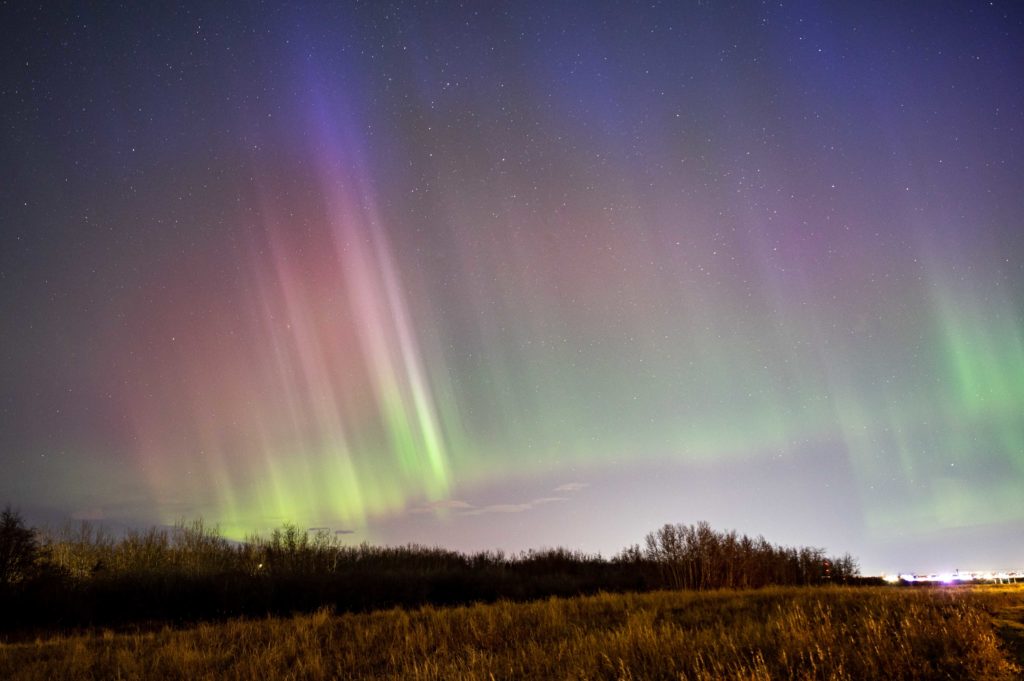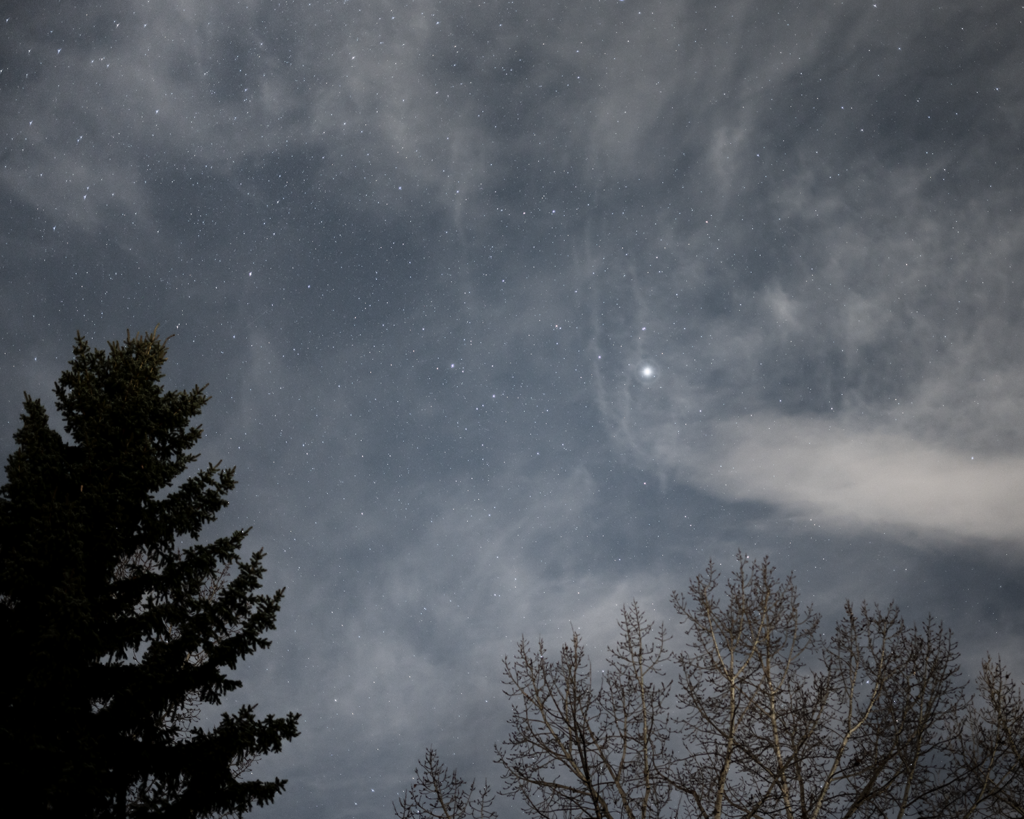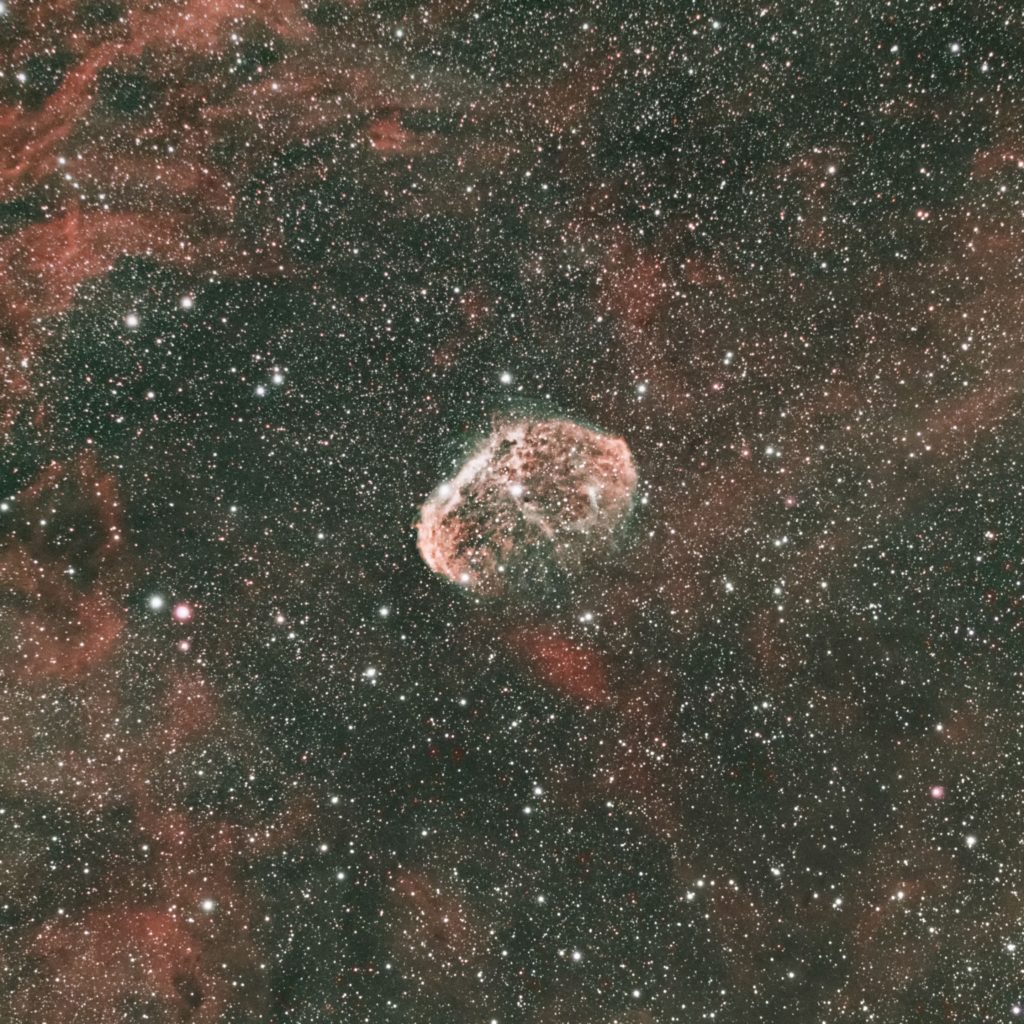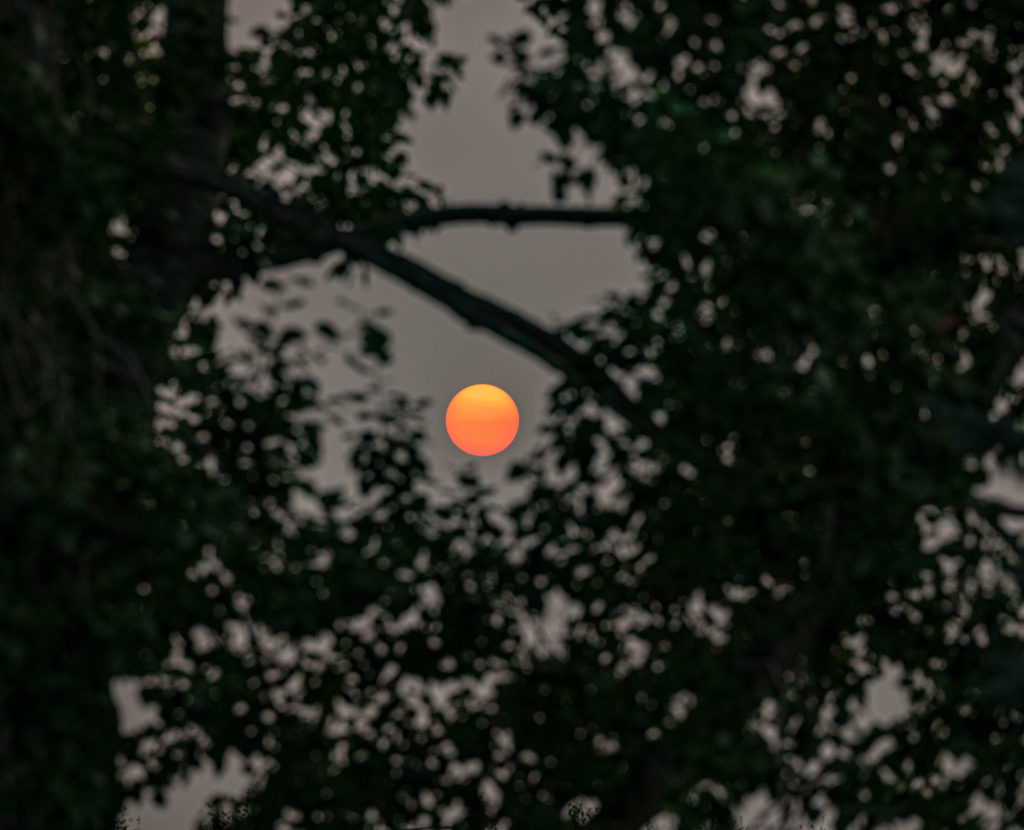
The sunrise comes late this time of year, especially for those who like me wake at 5 a.m. But on November 4, the man on the morning radio show announced, along with the standard traffic and weather reports, that a brilliant display of aurora borealis was underway and was visible from nearly anywhere in the city. So, despite a temperature well below freezing, I grabbed camera and tripod to head behind the house to see what all the fuss was about [Read more…] about Auroral Activity Kicks Into High Gear
Share This:


